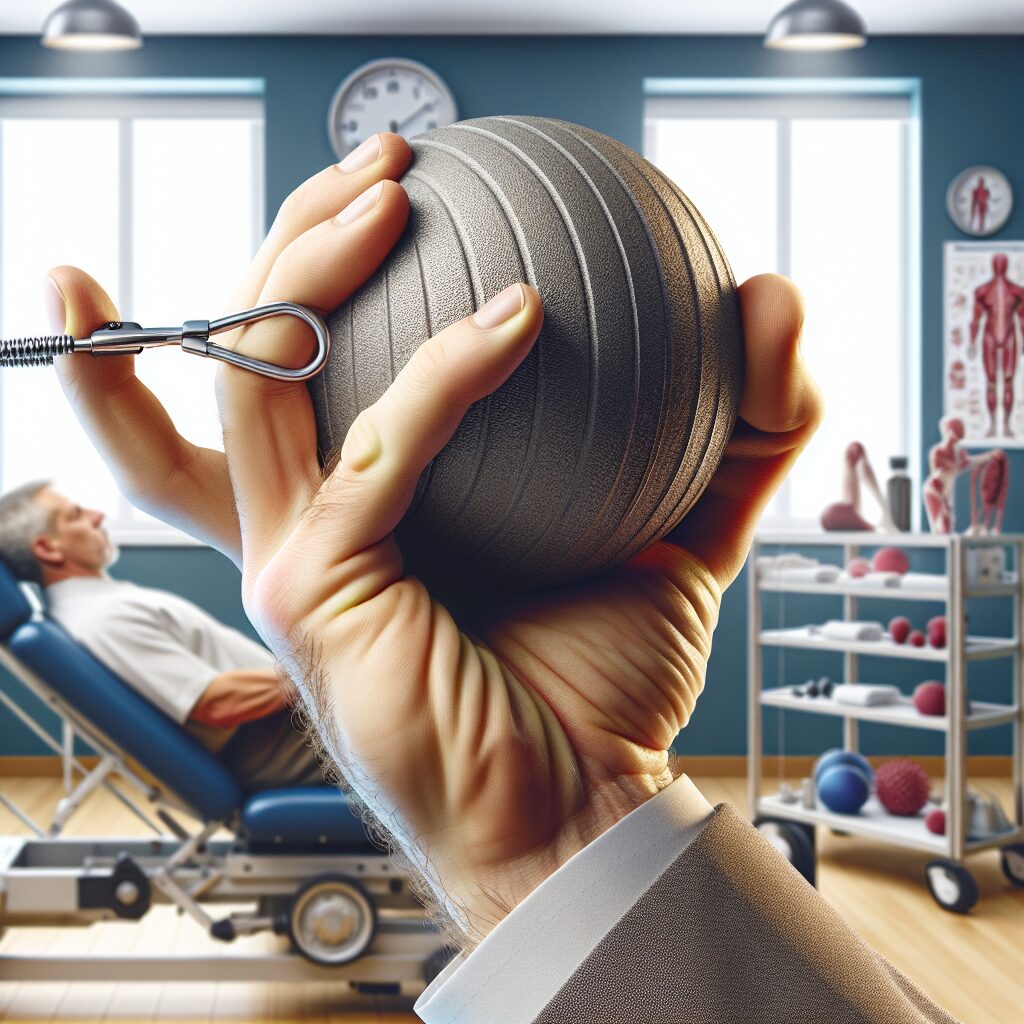A ball joint is a critical component of a vehicle’s suspension system. It acts as the connection point between the vehicle’s suspension and steering components and the vehicles’ wheels. In essence, they are responsible for providing the necessary flexibility and movement in order for a car to turn safely and efficiently. Ball joints allow for up-and-down movement of the wheel while also allowing for side to side movement – both of which are essential for smooth, safe steering.A ball joint is a type of pivoting joint used to connect two parts of a suspension system in a motor vehicle. It serves as the pivot between the wheels and the suspension, allowing them to move independently of each other. Ball joints are usually made from steel or aluminum and contain a bearing that allows for smooth movement.
What Does a Ball Joint Do?
A ball joint is a type of mechanical linkage, typically used in automobiles, that connects two parts of the suspension system. It is composed of a metal housing containing a bearing, which is usually made from steel or aluminum. The bearing can be either spherical or tapered, and it allows for rotation in multiple directions while providing support and stability to the suspension system. Ball joints are critical components that allow wheels to move up and down with the suspension while keeping them aligned with one another. Without ball joints, steering the car would be difficult. Additionally, ball joints are responsible for allowing the wheels to turn left and right when steering the car.
In addition to providing strength and stability to the suspension system, ball joints also help reduce vibration from road surfaces. This makes for a smoother driving experience and helps keep tires from wearing out prematurely due to excessive vibration. Without properly functioning ball joints, vehicles can become unsafe to drive due to reduced control over turns and other maneuvers. It is important that ball joint maintenance is done regularly in order for vehicles to remain safe on roads.
What are Ball Joints in Automotive Systems?
Ball joints are an essential part of any automotive system. They are components that allow the suspension and steering systems to move freely, allowing for smooth handling and control of the vehicle. Ball joints provide a connection between the wheels, suspension, and frame of the vehicle, as well as provide support and stability during turns and turns. Ball joints are also commonly used in other applications such as brakes and shock absorbers.
Ball joints have a spherical shape with a metal ball at each end. The ball is usually connected to either side of the joint by a small pin or bolt. This type of joint allows for flexibility in the movement of the parts connected to it, while still providing enough strength to keep them together. This makes ball joints an ideal choice for use in vehicles where there is frequent vibration or movement from bumps in the road or other sources of force.
These types of joints are typically made from high-strength steel, aluminum, or other materials that can withstand high levels of pressure and motion without breaking down. Additionally, they often come with various lubricants that help reduce friction between different parts of the joint and increase its longevity. This ensures that ball joints will continue to work properly even after years of use.
When it comes to maintaining your vehicle’s ball joints, it’s important to regularly check their condition and make sure they’re properly lubricated. Additionally, it’s important to replace them if they become worn out or damaged over time. Doing so will ensure that your vehicle continues to drive safely and smoothly for years to come!
What is a Ball Joint?
A ball joint is a type of mechanical fastener used to join two objects together. It works by connecting a ball joint at one end of the two objects and using a threaded screw or bolt to secure the connection. The ball joint provides a strong, reliable connection between the two objects that can be adjusted as needed. Ball joints are commonly found in automotive suspension systems, but can also be used for other applications where a strong, adjustable connection is required.
Types of Ball Joints
There are several different types of ball joints available, depending on the application. Some common types include: spherical bearing joints, taper bearing joints, and rod end joints. Each type has its own advantages and disadvantages depending on the application it is being used for. For example, spherical bearing joints provide more flexibility and are better suited for applications with dynamic loads, while taper bearing joints are better suited for static loads.
Benefits of Ball Joints
Ball joints offer many benefits over traditional fasteners such as bolts and screws. They provide an adjustable connection that can be easily adjusted as needed, which makes them ideal for applications where precise alignment is required. In addition, they are stronger than traditional fasteners and have a longer lifespan due to their durable construction. Finally, they are relatively inexpensive compared to other types of fasteners, making them an economical choice for many applications.
Types of Ball Joints
Ball joints are a critical component in many automotive and machinery applications. They allow for movement in two or more planes, providing both flexibility and strength. There are several types of ball joints available to suit different needs. The most commonly used types are the rod end, single-axis, double-axis, triple-axis, and universal ball joint.
Rod End Ball Joints
Rod end ball joints are the most basic type of ball joint and have a single axis of movement. They are typically used on steering linkages or as suspension components in vehicles. They consist of a cup with a spherical inner surface that houses the ball stud, which is connected to the rod end. The rod end is then connected to the rest of the vehicle’s suspension system or steering linkage.
Single-Axis Ball Joints
Single-axis ball joints are similar to rod end ball joints but have an additional axis of movement which allows for greater range of motion. These are often found in suspension systems and steering linkages as well as industrial machinery such as cranes and forklifts. Single-axis ball joints consist of two pieces – a cup with a spherical inner surface that houses the ball stud, and an outer sleeve that fits over the cup and provides additional support for the joint’s movement.
Double-Axis Ball Joints
Double-axis ball joints are similar to single-axis but have two axes of motion instead of one. These are often used in applications where flexibility is needed, such as in steering linkages or suspension systems on vehicles or in industrial equipment such as cranes and forklifts. Double-axis ball joints consist of three pieces – a cup with a spherical inner surface that houses the ball stud, an outer sleeve that fits over the cup and provides additional support for the joint’s movement, and a third element that connects both pieces together and allows for rotation in two planes at once.
Triple-Axis Ball Joints
Triple-axis ball joints are similar to double-axis but have three axes of motion instead of two. These are often used in applications where flexibility is needed such as vehicle suspension systems or industrial equipment such as cranes and forklifts. Triple-axis ball joints consist of four pieces – a cup with a spherical inner surface that houses the ball stud, an outer sleeve that fits over the cup and provides additional support for the joint’s movement, a third element that connects both pieces together and allows for rotation in three planes at once, and a fourth element which acts as an anchor point for securing all three elements together securely.
Universal Ball Joints
Universal ball joints provide even more flexibility than triple-axis by allowing for unlimited rotation about any given axis depending on its design parameters. Universal ball joints can be used in numerous applications ranging from automotive suspensions to industrial machines like cranes or excavators where greater range of motion is required than what can be achieved by other types of joint configurations. Universalballjointsconsistoffivepieces–acupwithasphericalinner surfacethathousestheballstud,ananoutersleevethatfitsoverthecupand providesadditionalsupportforthejoint’smovement,athirdelementthatconnectbothpieces togetherandallowforrotationinanydirectiondependingonitsdesignparametersandafourthelementwhichactsasananchorpointforsecuringallfour elements securely together.

Signs of a Bad or Worn Out Ball Joint
Ball joints are a crucial part of the suspension system in your vehicle, connecting the control arms to the steering knuckles. Worn out ball joints can cause a variety of issues, such as steering instability, uneven tire wear, and increased road noise. It’s important to keep an eye out for these signs of a bad or worn out ball joint:
– Clunking noises when you turn: If you hear clunking or grinding noises while turning the steering wheel, it could be an indication that your ball joints need to be replaced.
– Uneven tire wear: Worn ball joints can cause your tires to wear unevenly, leading to premature tire replacement. You may also experience reduced grip and traction.
– Loose steering: If you feel a looseness in your steering wheel while driving, it could be a sign that your ball joints are worn out. This can contribute to difficulty in controlling your vehicle and keeping it on the road.
– Vibrations through the steering wheel: If you feel vibrations through the steering wheel at certain speeds, this could be another sign of worn ball joints. Vibrations may also indicate other issues with suspension components like shocks and struts.
It’s important to inspect all parts of your suspension system regularly for signs of wear and tear so that any problems can be caught early before they lead to further damage or dangerous driving conditions. If you notice any of these signs of bad or worn out ball joints, have them inspected by a professional mechanic as soon as possible for repair or replacement.
Checking the Ball Joint
The first step in testing a ball joint is to check for any visible signs of wear or damage. Look for any cracks, chips, or other damage that may have occurred. If there is any visible damage, the ball joint should be replaced immediately. If there is no visible damage, then the next step is to check the movement of the ball joint. Move it around and see if it moves freely without any grinding or binding sensations. If it does not move freely, then it needs to be replaced.
Testing with a Hydraulic Jack
Another way to test a ball joint is to use a hydraulic jack. Place the jack under the control arm and lift the vehicle up slightly. This will allow you to check for play in the ball joint by pushing and pulling on the control arm while still supporting it with the jack. If there is any play in the ball joint, then it should be replaced immediately.
Testing with a Pry Bar
The last method of testing a ball joint is to use a pry bar. Place the pry bar between the control arm and steering knuckle and try to move them apart by pushing or pulling on either side of them. If there is any play in either direction, then it means that the ball joint needs to be replaced as soon as possible.
Overall, testing a ball joint requires some basic knowledge of car mechanics and an eye for detail when looking for signs of wear or damage. It also requires some tools such as hydraulic jacks and pry bars in order to properly test them for play or looseness in order to determine if they need replacement or not.
How to Replace a Bad or Worn Out Ball Joint
Replacing a bad or worn out ball joint is an important part of preventive maintenance for any vehicle. Ball joints are essential components of the suspension system, and if they become worn or damaged, they can cause dangerous steering issues. Follow these steps to replace a bad or worn out ball joint on your vehicle.
First, you will need to raise the vehicle on jack stands and remove the tire from the wheel hub assembly. Then, you will need to disconnect the lower control arm from the ball joint by using a large pry bar and removing the castle nut. Next, you will need to use a pickle fork to separate the ball joint from the spindle. Finally, you will need to install a new ball joint and reattach it to the lower control arm using a new castle nut and torque it appropriately.
It is important to note that when replacing a bad or worn out ball joint, you should always use a high-quality replacement part that meets the vehicle manufacturer’s specifications. Additionally, while installing the new part it is essential that all mounting hardware is tightened properly. If any of these steps are not done correctly it can result in poor handling or even an accident due to steering failure.
In conclusion, replacing a bad or worn out ball joint is an important part of preventive maintenance for any vehicle. It is recommended that this task be done by an experienced mechanic as improper installation can lead to dangerous consequences. If done correctly, however, this repair can help ensure safe driving conditions for years to come.

Conclusion
A ball joint is an important part of a vehicle’s suspension system, and it provides the necessary connection between the wheels and the suspension components. Without it, a vehicle’s wheels would be unable to move up and down independently, which would cause a jarring ride for passengers. Ball joints are designed to be durable and last for many years, but they can become worn over time or damaged due to corrosion or impacts. When this happens, they should be replaced immediately in order to maintain a smooth ride and keep the vehicle safe.
In summary, ball joints are essential components of any vehicle with independent suspension. They provide an essential connection between the wheels and the suspension components, enabling them to move independently of each other. Without them, a car’s ride would be rough and uncomfortable. Additionally, if ball joints become worn or damaged they should be replaced immediately in order to maintain a safe driving experience.




